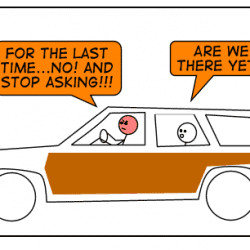Isn’t it time for church to embrace diversity?
We are witnessing a popular divide within the greater church. As ministry begins to reflect the pluralism of the American culture, impasses arise with respect to traditional values, morals and guidelines about who may and may not serve as leaders.
While in some cases we have moved assertively toward a more diverse body of church leadership, there are others who resist such change.
Gender issues still pose a major point of potential division. The Southern Baptist Convention still claims that women should not be allowed to preach or lead churches. In January 2007, Dr. Sheri Klouda, a tenure-track professor of theology at Southwest Theological Seminary since 2002, was fired because she was a woman.
These differing positions do not come without a price. In a recent interview, Bishop of Rochester, England, Michael Nazir-Ali, said, “Nobody wants a split (in the church), but if you think you have virtually two religions in a single church, something has got to give sometime.”
In a post-denominational world which divides more along lines of ideology and orthodoxy rather than church affiliation, it is difficult to imagine a church that will do anything but grow further apart.
If we maintain traditional standards upon which the historical church was built, we risk cultural alienation, a lingering sense of oppressiveness and further cultural irrelevance. If we press forward toward a vision of church within which gender, ethnicity and sexual orientation are not criteria for ministry, we risk divisions that may never be mended.
We tend to assume that we know about people’s beliefs based on their church allegiance, but that’s harder to do these days. Evidence of ideological ties being stronger than denominational affiliation is no more evident than among today’s young adults.
In a January 2007 report titled “How Young People View Their Lives, Futures and Politics: A Portrait of ‘Generation Next,’ ” the Pew Research Center notes not only that today’s young adults are increasingly liberal in their social and political views, but that the trend becomes only more pronounced the younger people are.
More young adults attend evangelical churches than any other age group, but these liberal social trends are consistent even among them. Those who seek to bolster their own position with numbers find it increasingly difficult to rely on membership as an indicator of the strength of their own constituency. This tells us that people will believe what they choose to believe, regardless of what we tell them to think.
Despite how one feels about sexuality with respect to scripture, it’s in our best interest as Christians to deal with this in a matter-of-fact way. For some, it’s a moral wedge issue. For others, it’s a call to justice and equality. The idea that both sides will take the time to discourse about their beliefs – and even their differences – is critical to our sustainability as a cohesive body of faith.
Mary Lou Makepeace, executive director of the Gay and Lesbian Fund for Colorado, believes that churches must be actively engaged in the discussions about these issues, not just as they relate to the church, but in the context of society as a whole. “The ministry is on the front lines addressing this issue with families and individuals on a daily basis,” says Makepeace, “but may be lacking the tools to comfortably have a discussion.”
Our young adults lack a sense of hope for their own peer group. There is a crisis of belonging, strong leadership and capable mentoring to help guide them toward the hope they would seek for themselves. Simply dividing ourselves further over irreconcilable differences instills no more faith in the institutions who claim moral authority on many different grounds.
While we argue over the place of women, gays and other groups of people in the pulpit, a generation loses faith in the religious system itself. Someone may claim victory in time, but by then, there may be little left to celebrate.











